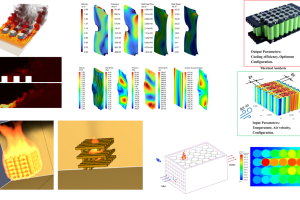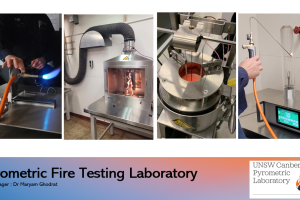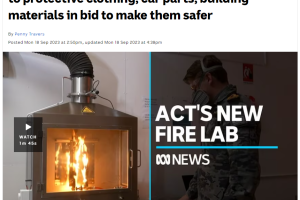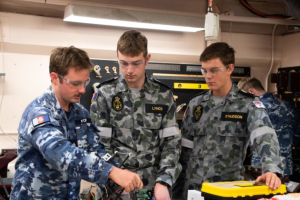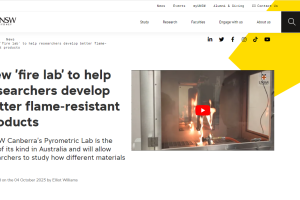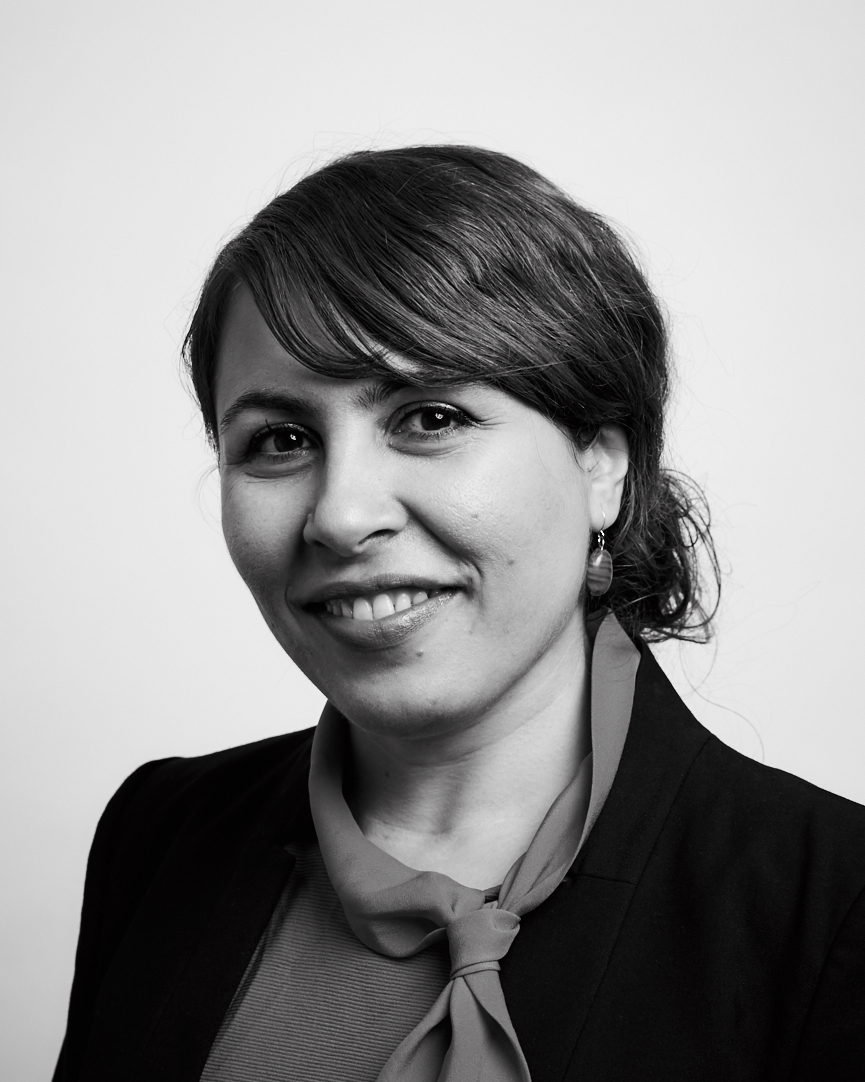
Keywords
Fields of Research (FoR)
Fire ManagementSEO tags
Biography
Dr Maryam Ghodrat is a Senior Lecturer specialised in thermal fluid and energy system with key focus on combustion science for safety and climate change impact on thermal systems. She is leading two research teams Heat Transfer and Combustion and Adaptive Design for Resilient Infrastructures at School of Engineering and Technology, UNSW Canberra with a team of 5 PhD students, one RA and 7 honour students. Her research is...view more
Dr Maryam Ghodrat is a Senior Lecturer specialised in thermal fluid and energy system with key focus on combustion science for safety and climate change impact on thermal systems. She is leading two research teams Heat Transfer and Combustion and Adaptive Design for Resilient Infrastructures at School of Engineering and Technology, UNSW Canberra with a team of 5 PhD students, one RA and 7 honour students. Her research is interdisciplinary, focusing on the development of robust, scalable, and adaptive strategies to mitigate fire damage to infrastructures through effective design, construction, and use of fire resistance materials.
In 2021, Dr Ghodrat established and leads Pyrometric Laboratory with several dedicated flame behaviour testing equipment to unravel the fundamental behaviour of materials, products and systems exposed to direct and indirect flame. She has also designed a built a modular subsonic combustion wind tunnel for visualisation of flame propagation to assess Wildland Urban Interface fire scenarios.
My Grants
Chief Investigator (CI) of two competitive Category 1 grants (ARC ITRHs) and two Category 2 grants.
My Qualifications
- Doctor of Philosophy, University of New South Wale, UNSW Sydney (2014)
- Master of Engineering ,University of New South Wale, UNSW Sydney (2010)
My Awards
- Goldstar award for 2024, ARC-DP placed top 10%
- Recognized as one of the top 2% of highly cited research scientists in the world by Stanford University and Elsevier (2024).
- Goldstar award for 2023, ARC-DP placed top 10%
- School of Engineering and Technology Publication award for outstanding research outcome in 2022.
- Recognized as one of the top 2% of highly cited research scientists in the world by Stanford University and Elsevier (2023).
- Goldstar award for 2022, ARC-DP placed top 10%
- Best Paper Award, International Conference of Flow Dynamics (ICFD) conference, 2023
- People choice award for my pitch on "Pyrometric Lab" , UNSW Pitch Night, 2023
- Researcher Development Awards for gender equity (WSU)
My Research Activities
Current research activities cover four broad and interdisciplinary fields :
Design for Extreme Environment
- Fire Safety and Smart Building
- Infrastructure and community resilience
- Fire Safety of Modular construction
- Built environment and Fire Safety
- Application of data assimilation to risk and disaster management.
- Li-ion batteries and large scale energy storage systems safety
- Fire modeling including CFD and zone modeling;
- Wind Engineering
Emissions and pollution Transport Physics
- Numerical models in predicting atmospheric dispersion of pollutant.
Fire Safety Design
- Performance-based fire safety design
- Design and development of building fire safety strategies.
- Fire Safety analysis of new materials
- Fire Safety design and analysis of timber buildings
- Mitigating fire damage by proper design, construction, arrangement and use of buildings, materials and structures
Decarbonization of Energy Sector
- Hybrid renewable energy systems for net zero energy buildings (Thermodynamic analysis)
My Research Supervision
Supervision keywords
Areas of supervision
- AI and hybrid methods in fire sensing
- Design for extreme environment
- Atmospheric Contaminant Transport
- Physics Informed Machine Learning
- Adaptation and transformation of building and infrastructure to natural and man-made disasters
- Fire safety of emerging batteries
Currently supervising
- Currently supervising 5 PhD candidates as primary, joint or secondary supervisor.
- PhD graduated at UNSW: 4
Supervision record:
- Supervised 12 Honour theses as Main supervisor.
- Supervised 5 Bachelor of Technology theses.
- Supervised 2 ECRs (PostDoctoral research fellow)
- HDR completions (as main supervisor) in other universities: 4 HDRs
Accepting PhD students.
PhD positions are available for highly motivated candidate in materials , civil or mechanical engineering . Knowledge and experience in working with OpenFOAM software is highly desirable.
Ideal candidates should have:
- A four-year Bachelor's and two-years MSc degrees with high WAMs (minimum of 87%) and research experience from top institutions in the field of Mechanical or civil engineering
- A track record of publications in top-ranked scholarly journals and presentations in peer-reviewed conferences; and,
- Good interpersonal, communication, presentation and writing skills in English.
If you are interested in doing a PhD in my group , please send a copy of PDF combining your CV, Transcripts and English Test Results to m.ghodrat@unsw.edu.au
My Engagement
- Co Chair and Program lead : Australian Fluid Mechanics Conference, 2024, Canberra , Australia
- Guest Editor , International Journal of Heat and Fluid Flow (Proceeding of AFMC34 conference)
- Executive committee of Modelling and Simulation Society of Australia and New Zealand Inc. (MSSANZ)
- Scientific committee member of 5th International Conference on Fluid Flow and Thermal Science (ICFFTS 2024), Portugal
- Scientific committee member of International Conference on Fire Safety Engineering Research and Practice (iCFSERP-2024)
- Scientific committee member of 5th Asia-Oceania Symposium on Fire Safety Materials Science and Engineering (2023, Sydney AUS)
- Scientific committee member of Australian Combustion Symposium, 2023, Darwin, NT
- Scientific committee member of Australian Fluid Mechanics Conference, Sydney, 2023
-
Mentor in International Association of Wildland Fire
In the Media:
New 'fire lab' to help researchers develop better flame-resistant products (unsw.edu.au)
Warman returns to UNSW Canberra
Memberships
Member of :
- International association for fire safety science
- International Association of Wildland Fire
- Combustion Institute
- Australian Institute of Energy
- Women in High Performance Computing (WHPC)
- Woman in Science and Engineering (WisE)
- Science & Technology Australia
- Women in Engineering @ UNSW
My Teaching
I have taught in over 12 undergraduate and graduate courses, currently at UNSW and in previous academic roles at other universities
Publications
ORCID as entered in ROS
Research Activities
Lab head: Dr Maryam Ghodrat
Heat Transfer and Combustion Laboratory at School of Engineering and Technology, UNSW Canberra, is contributing new theories, models and computational tools for accurate engineering design and analysis of complex flows including heat transfer, combustion and related air pollution ,environmental fluid mechanics and decarbonization of the energy sector
Combustion presents…
Research Group lead: Dr Maryam Ghodrat
…"Adaptive design for resilient Infrastructure" research group at School of Engineering and Technology, UNSW, is contributing new theories, models and computational tools for accurate engineering design of vulnerabilities of buildings and critical structure to natural hazards and man-made disasters"
Lab head: Dr Maryam Ghodrat
Leading by Dr Maryam Ghodrat, Pyrometric lab is UNSWs’ fire testing laboratory offering state of the art facilities and expertise to evaluate the fire performance of materials, products and systems under direct and indirect flame and radiative heat fluxes.
The Pyrometric Lab is currently being used to investigate various fire phenomena such as ignition, heat release rate, and compartment fire based on actual testing. Multiple small- and intermediate-scale experimental…
Videos
UNSW Canberra’s Pyrometric Lab is the first of its kind in Australia and will allow researchers to study how different materials burn.
Published on the 04 October 2023 by Elliot Williams
After entering UNSW Canberra's mechanical engineering workshop and walking past the benches covered in lawnmower engines, you'll find yourself at the entrance to the university's brand new 'fire lab'.
The Pyrometric Laboratory (to give it its proper name) is the first of its kind in Australia. It’s chock full of brand new, state-of-the-art equipment that will allow researchers and students to set fire to all manner of materials - safely of course.
By observing these objects burn and measuring how they respond to fire, researchers hope to eventually develop a range of materials that are more flame resistant. This includes eco-friendly building materials and more protective uniforms for firefighters.
The lab’s lead researcher and senior lecturer in engineering, Maryam Ghodrat, said the lab’s main focus is to help save homes, businesses and, most importantly, lives from fire.
“We’re expecting to see bigger and more destructive bushfires as we continue to feel the effects of climate change,” Dr Ghodrat said.
“That means more homes and businesses will be impacted by fire and we want to make them as safe and resistant to fire as possible.
“By testing different materials in the Pyrometric Lab we can see how they respond to fire and which are the safest. Eventually, we hope this research will lead to the development of new materials that are more flame resistant than anything currently available.
“This research can inform Australian building standards so that homes built in bushfire prone areas are as protected as they possibly can be.”
But the lab won’t only focus on building materials.
Engineering honours students, Jonathan Lu and ADFA Navy Sub Lieutenant (SBLT) Matthew Hordern, are currently undertaking two research projects in the lab that could have far-reaching benefits for firefighters and the automotive industry.
UNSW Canberra students Jonathan Lu and Matthew Hordern in the Pyrometric Lab.
UNSW Canberra honours students Jonathan Lu and Matthew Hordern are among the first people to conduct experiments in the Pyrometric Lab. Image: UNSW Canberra
Jonathan’s research involves him burning a selection of fabrics from firefighter uniforms in the ‘burner box’; one of the new pieces of equipment that is the size of a large oven and can expose materials to direct flame.
He is testing fabric from a 2013 NSW Rural Fire Service jacket and also a current Fire and Rescue uniform, one that would be used in metropolitan firefighting.
“I’m observing how the different materials respond to direct flame, and I’m interested to see how that might have changed in the years between when these uniforms were manufactured,” Jonathan said.
“If we can get a better understanding of how quickly the fabric ignites and how fast the flame spreads, it will hopefully lead to being able to produce better, more fire-resistant uniforms.
“Firefighters go into extremely dangerous situations, so if we can do something to help keep them safer and potentially save lives then that’s an awesome achievement.”
Concurrently, SBLT Hordern is setting fire to different plastic car parts he salvages from wrecking yards around Canberra. He’s looking at an entry-level car (Honda Jazz), a mid-level (Ford Focus) and a high-end car (Range Rover).
“I’m taking plastic bits from inside the car, such as centre consoles, dashboards and ‘pleather’ seats, anything that might be in the immediate vicinity of people inside a car in an accident,” SBLT Hordern said.
“If a car catches fire in an accident, that’s obviously really dangerous considering the fuel and other chemicals. But I’m interested in what happens if the plastics catch fire, and what chemicals they emit when they burn that people could be exposed to.”
Jonathan Lu sets up an experiment in the burner box.
Jonathan Lu sets up an experiment in the burner box where a piece of firefighter clothing will be burned. Image: UNSW Canberra
In addition to the ‘burner box’, the lab is also stocked with a smouldering test device, an oxygen index analyser and a structural cohesion tester. It is the only lab in Australia to have all of this equipment in one location.
Jacob Ross, the laboratory technician overseeing the lab, said it had been a challenge to get up to speed with the new equipment.
“We acquired the equipment over the past 18 months and commissioning the different machines was a challenge that required a lot of research,” Mr Ross said.
“We had to ensure we met the specific requirements of each machine so we can have confidence in the results they produce. And all the relevant safety measures had to be put in place before the students and researchers could work with them.
“It’s been a great experience to work with such high-end equipment and support the important research that will be undertaken in this lab.”
Read more about the equipment in the Pyrometric Laboratory here: https://research.unsw.edu.au/projects/pyrometric-laboratory
